Salisbury Plain, South Georgia- Visiting One of the Island’s Largest King Penguin Colonies
Purchases made through links earn us a small commission, at no extra cost to you.
If there ever was a place you have to see to believe, it’s Salisbury Plain on South Georgia Island.
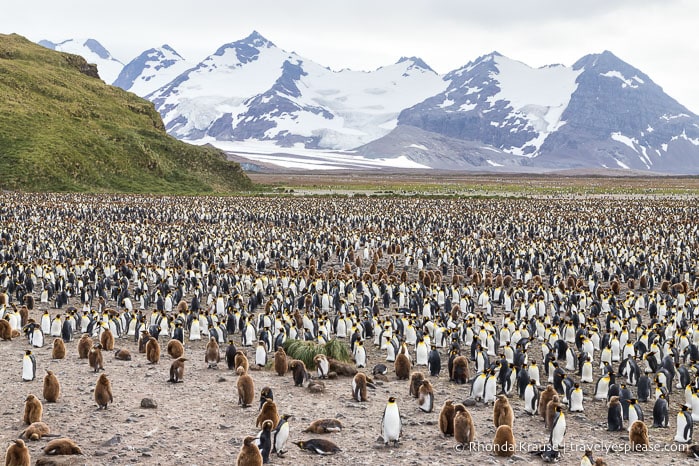
Before our expedition cruise to South Georgia and Antarctica, I’d heard about the massive king penguin colony at Salisbury Plain, packed tight with hundreds of thousands of beautiful, buzzing birds. It was actually a picture of this specific king penguin colony and its scenic backdrop that inspired me to visit South Georgia Island.
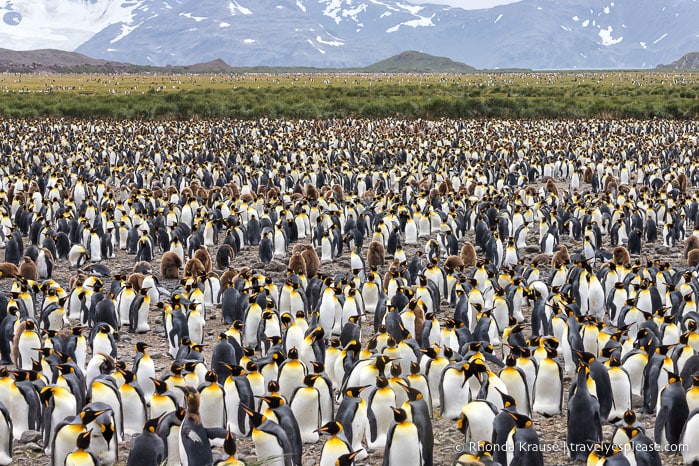
As impressive as numbers and photos were, they couldn’t fully convey the tremendous amount of penguins, and other wildlife, that call Salisbury Plain home. And they certainly didn’t prepare me for the overwhelming excitement I felt observing all the action from the edge of the colony.
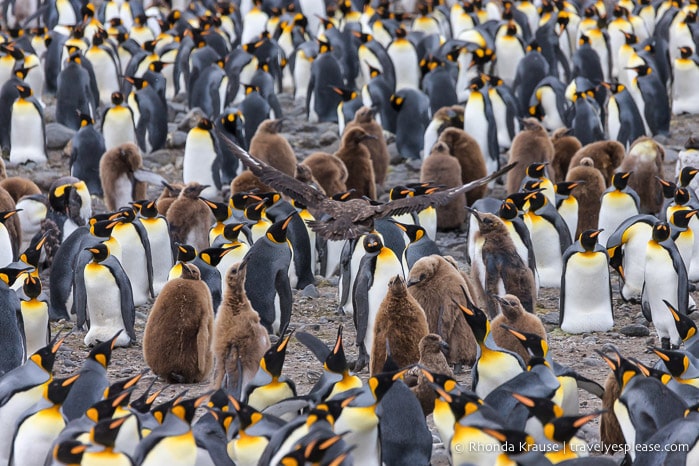
If ever you go on a cruise to South Georgia, fingers crossed that you get to visit Salisbury Plain because it’s one of the world’s most spectacular wildlife spectacles.
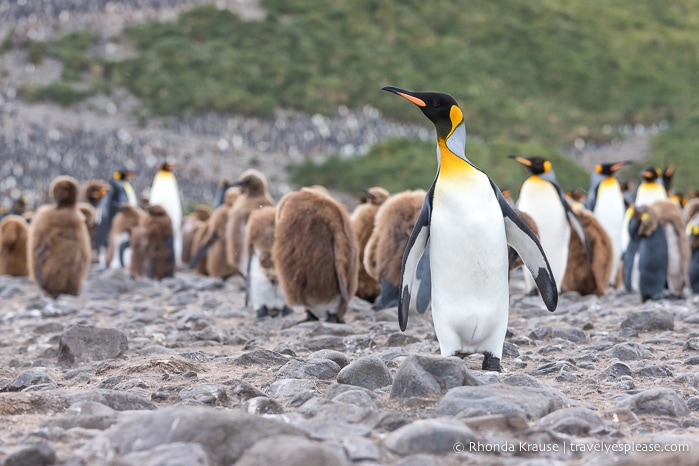
About Salisbury Plain on South Georgia Island
Salisbury Plain is a glacial outwash plain on the north coast of South Georgia that was formed by the withdrawal of the Grace Glacier.
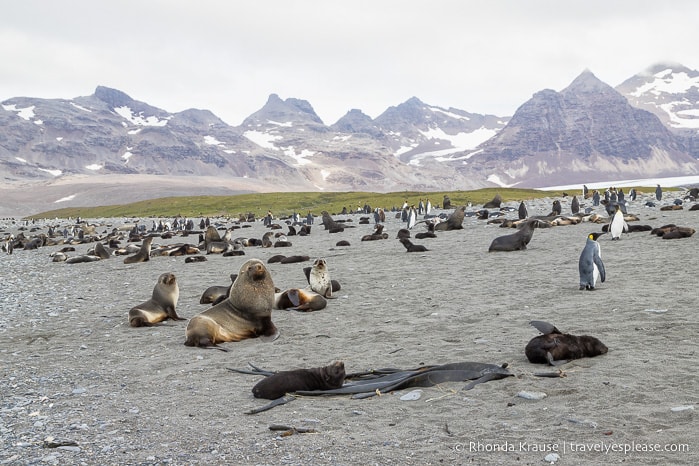
The basin is framed by tussac-covered hills and bluffs on one side and the Bay of Isles on the other, but it’s Grace Glacier and Lucas Glacier on each end that give Salisbury Plain its visual appeal.
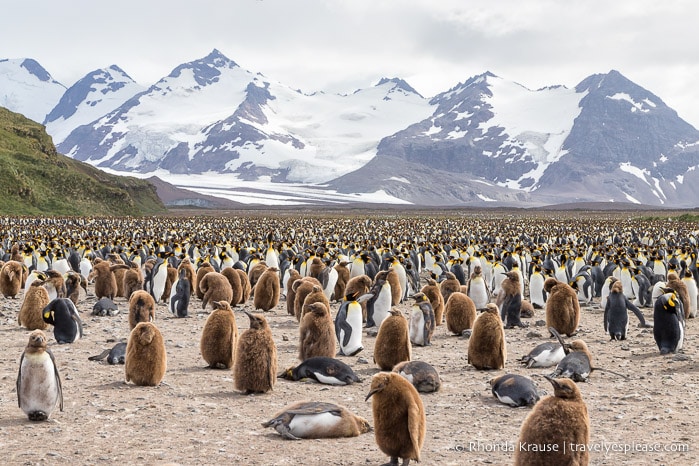
Salisbury Plain is best known for hosting the second largest king penguin colony on South Georgia Island, with a population of about 250,000. This includes breeding pairs, their chicks, and non-breeding penguins.
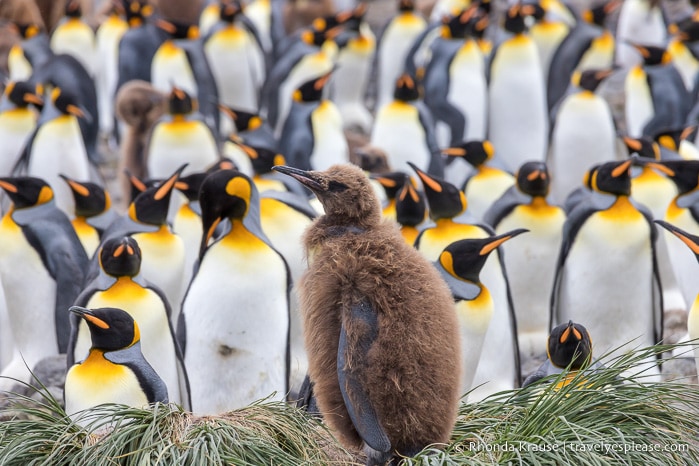
In addition to king penguins, other species of wildlife that breed at Salisbury Plain include elephant seals, fur seals, and seabirds like giant petrels and albatrosses.
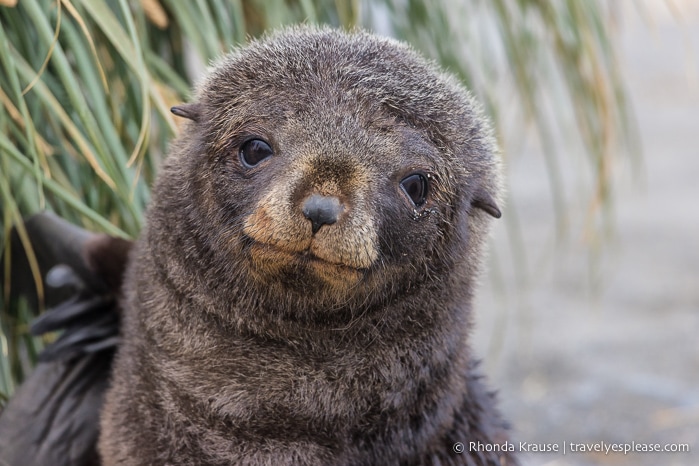
King Penguins at Salisbury Plain
King penguins nest in huge colonies at a few different locations on South Georgia Island. Of the total 450,000 breeding pairs (and rising), about 60,000 occupy the rookery at Salisbury Plain.
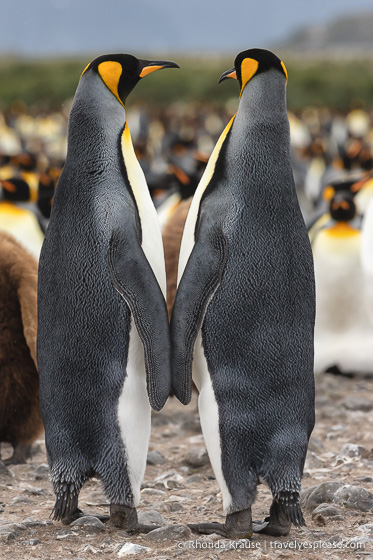
King penguins are closely related to emperor penguins so have some similarities, like the golden yellow plumage on their neck and throat and large size (kings can be 3 ft tall). King penguins, like the emperor, also lay only one egg per breeding season and incubate the egg under a fold of skin while holding it on their feet.
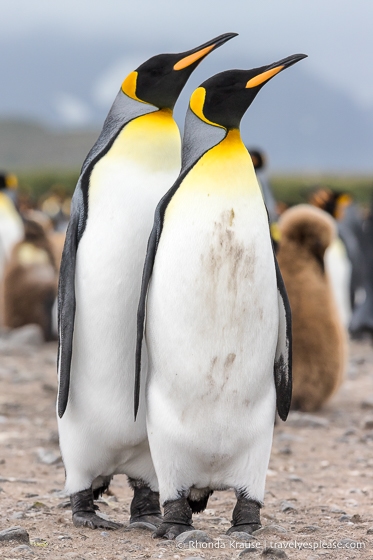
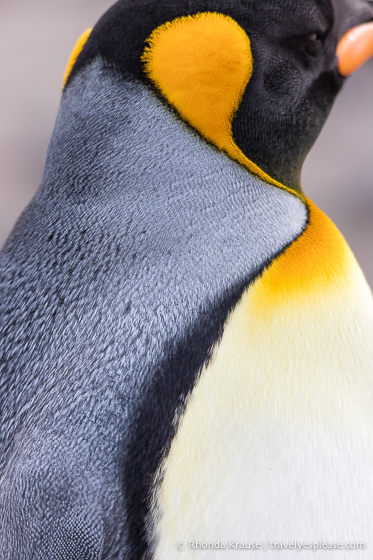
If you’re visiting Salisbury Plain in the summer, you’ll likely get to see chicks and eggs, or both small and large chicks at the same time. This is because king penguins have a 13-16 month breeding cycle (from courtship to fledging of the chick) and spread out the laying of their eggs between November and April. Eggs are incubated for 54 days, so the first chicks hatch in mid-January.
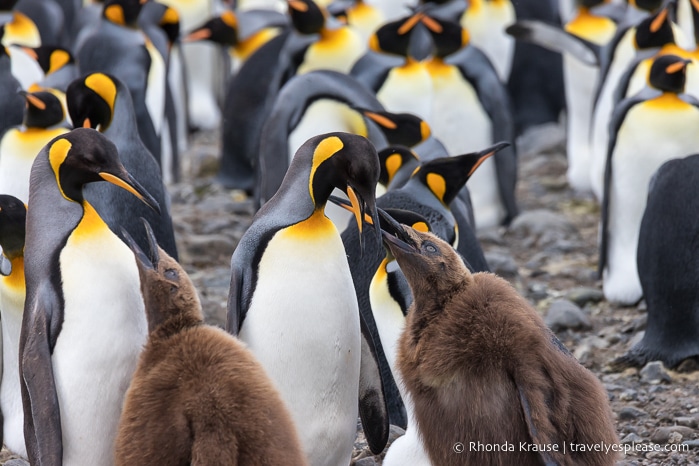
Our Visit to Salisbury Plain
We visited Salisbury Plain in mid-January and it was perfect timing for everything I wanted to see- penguins with eggs and fluffy chicks!
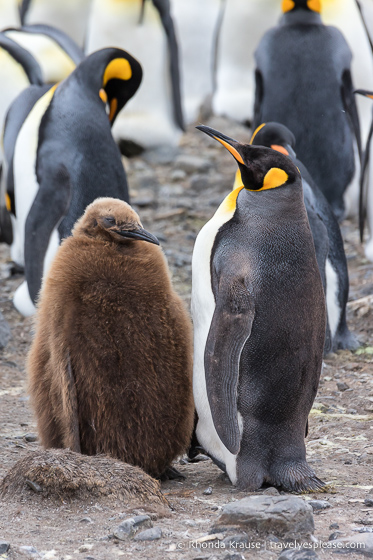
As soon as we arrived at the landing site, we were greeted at the zodiac by curious penguins who waddled over to the water’s edge. Already we could tell that viewing the wildlife at Salisbury Plain was going to be better than we imagined!
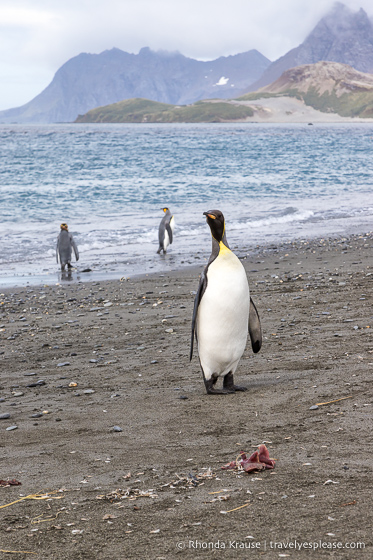
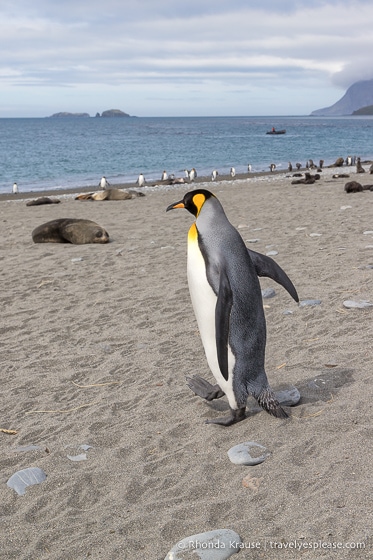
As we stepped onto the sandy beach, we could see groups of fur seals resting with their pups as king penguins “conversed” with each other nearby.
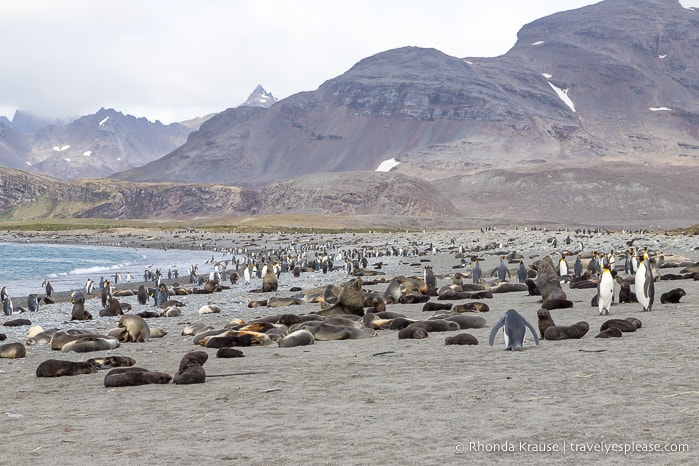
It was so entertaining to watch the penguins walk around and communicate with each other. We even witnessed a brief argument between three penguins who started to slap each other with their wings. I wonder what the fuss was about?
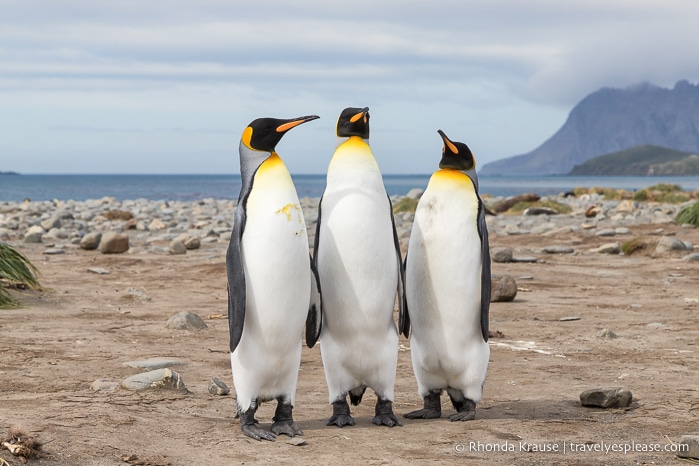
The beach is also where we got our first look at king penguin chicks. They were larger than I expected, so definitely not newborn, and had a brown downy coat covering their stout bodies.
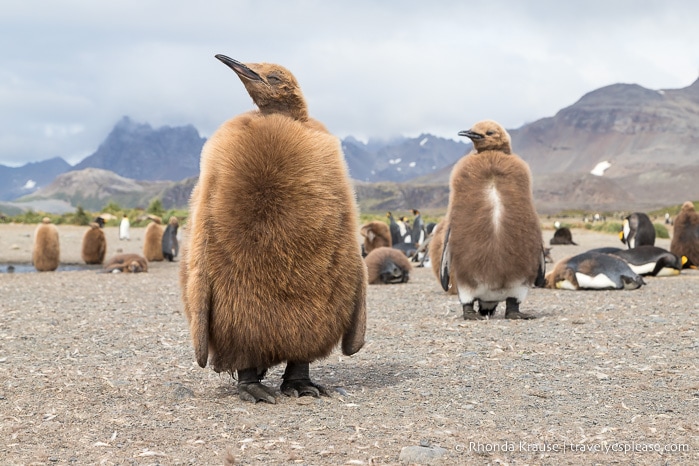
Some of the older chicks were moulting their feathers and based on their grouchy and irritated facial expressions, we could tell it was an uncomfortable process (and very awkward looking too!)
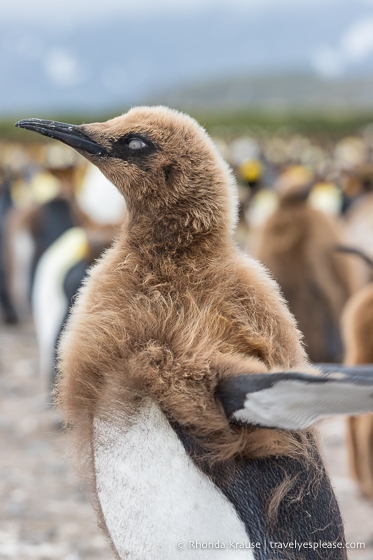
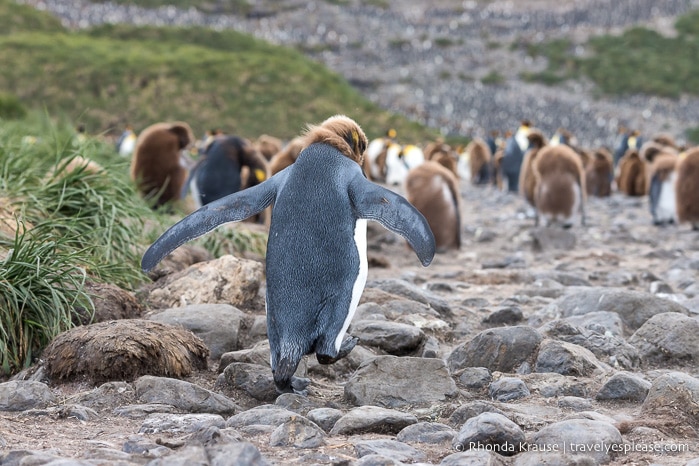
King penguin chicks were nicknamed “Oakum Boys” by early sailors because of their resemblance to the boys who used tarred fibres (oakum) to seal joints in wooden ships. As they worked, pieces of brown oakum would stick to their bodies, making them look fluffy like these penguin chicks.
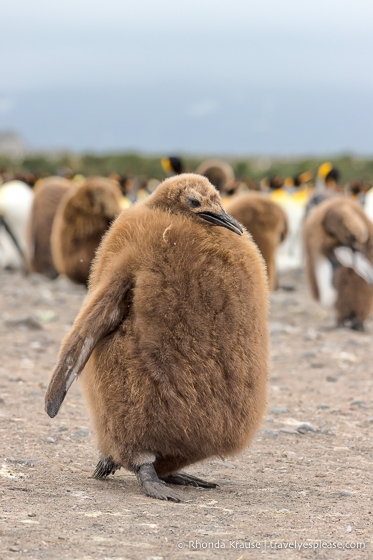
The distinct look of king penguin chicks also led to them being misidentified as an entirely different species of penguin. They were listed as “woolly penguins” in scientific books of the 19th century instead of king penguins.
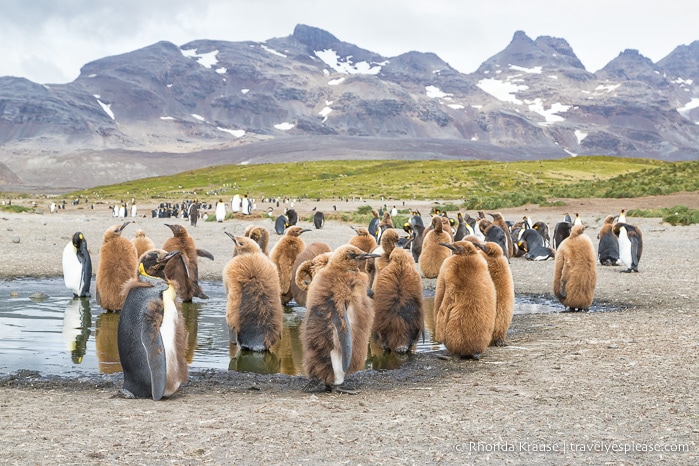
After some time watching the wildlife on the beach, we walked over to the edge of the penguin colony.
Even though I had seen photos of the king penguin colony at Salisbury Plain, I was still shocked by how huge it was. And the loud cacophony of vocalizations- that’s something a picture can’t capture!
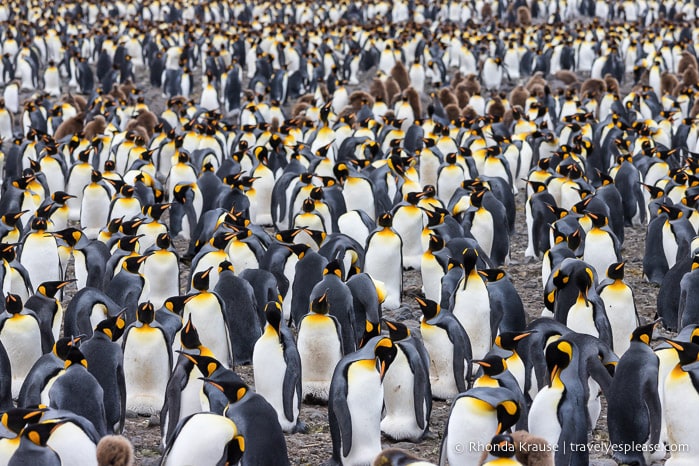
We excitedly walked up a small tussac-covered hill to get an elevated view of the rookery. From the top we could really see just how far the colony stretched. It was literally penguins as far as I could see- a buzzing, squawking sea of birds!
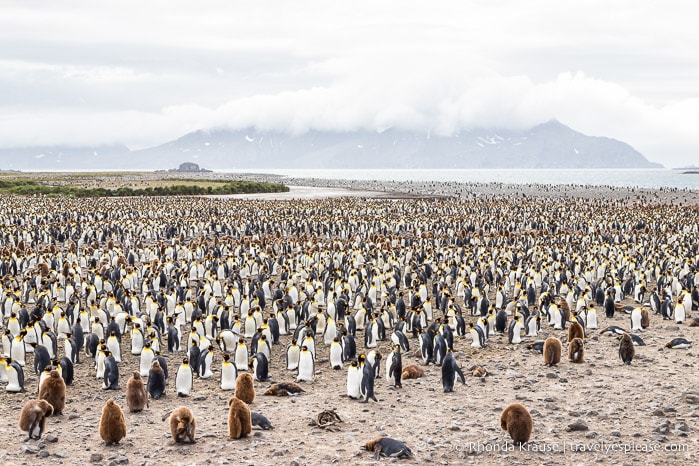
I kept shifting my attention from taking in the colony as a whole, to watching the behaviours of individual or small groups of penguins. There was so much going on it was hard to decide where to look!
As I scanned the rookery from the hill, I soon noticed a bulge covering the feet of some of the penguins. Every so often they would shift their weight and I could see that they were standing with their toes lifted off the ground. These were signs that that the penguins were keeping an egg warm.
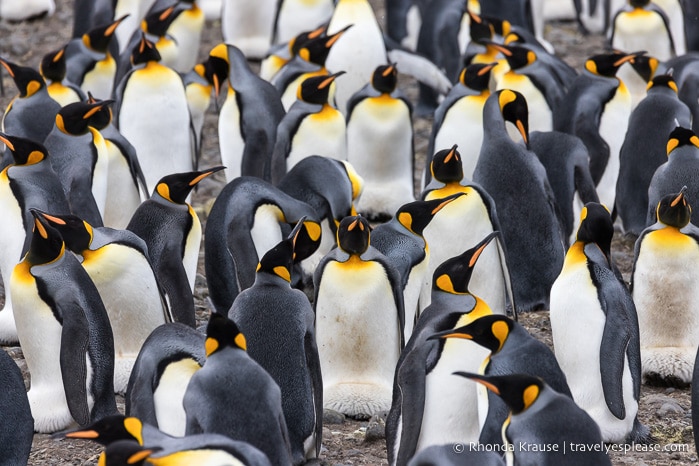
Once we realized that there were penguins with eggs, we became fixated on getting a glimpse of one. Mike was intently looking through the binoculars while I was scanning the crowd through the viewfinder of my camera.
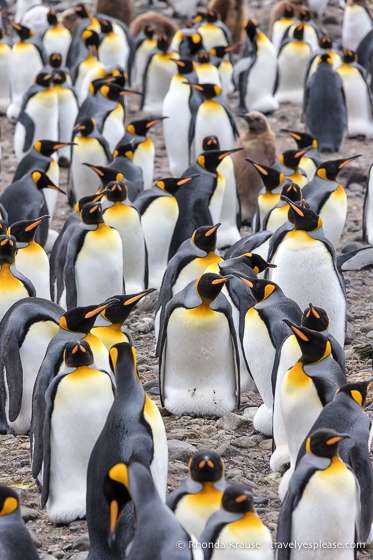
Finally, I got a fleeting peek at an egg as a penguin lifted its brood pouch to quickly check on it. The whole thing happened from a distance, but it was still thrilling to see! Later on as I flipped through my photos of the penguin rookery, I noticed a few more instances where penguins had their egg exposed.
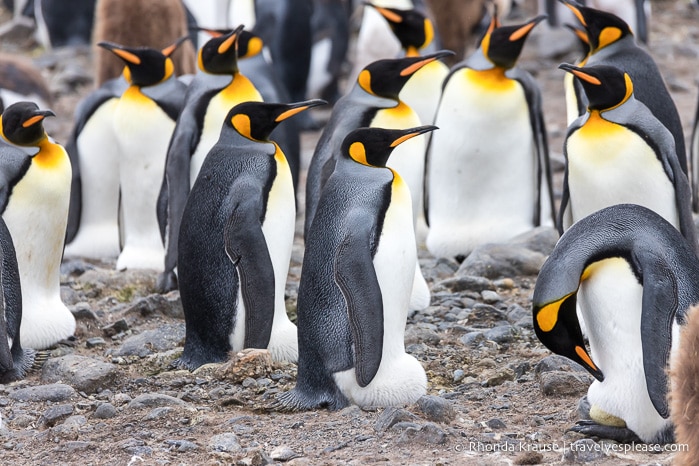
Satisfied that I had seen an egg, I headed back down to the “penguin highway” linking the beach to the large basin I was just looking down on. I found somewhere to sit and happily watched penguins waddle back and forth in a single file line.

The best part of sitting still and staying in one place was how close the penguins would get to me. I could clearly see their densely packed feathers shimmering in the light, the rugged scales on the bottom of their feet, their long black toenails, and wisps of feathers blowing off their bodies.
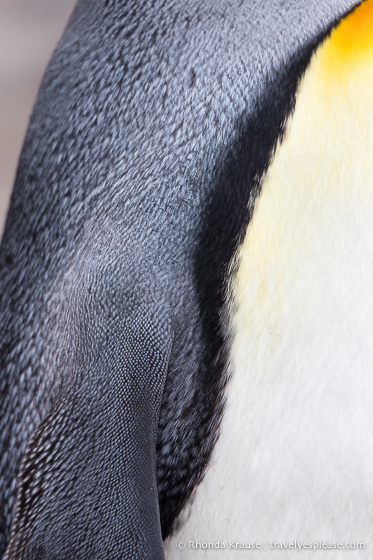


It was easy to get carried away taking photos of the penguins, but I made sure to put the camera down at times and just watch, listen, and take it all in. A place as special as Salisbury Plain deserves as much undivided attention as possible.
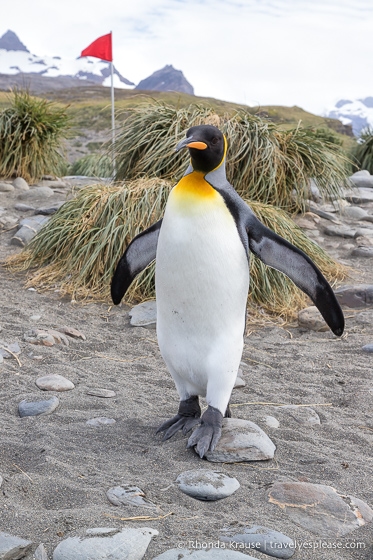
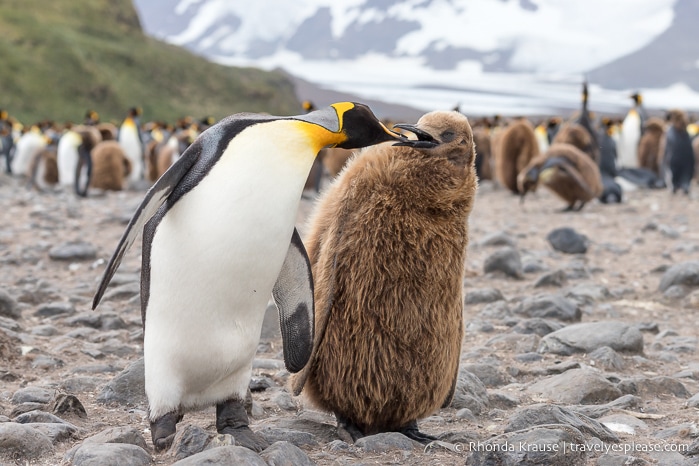
We had quite a lot of time at Salisbury Plain to watch the wildlife, but I still didn’t want to leave when the expedition staff started rounding everyone up. Mike and I made the most of every moment and were purposely the last ones to board the zodiac back to the ship.
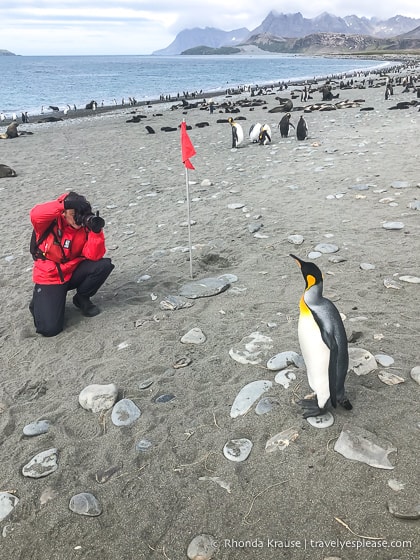
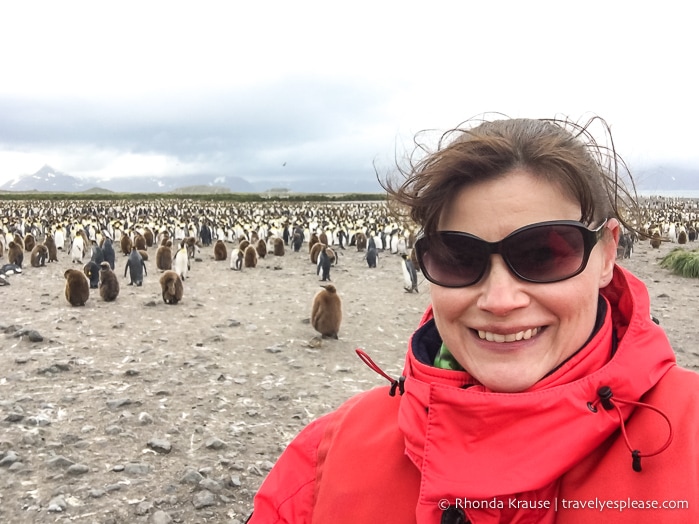
Final Thoughts About Visiting Salisbury Plain
On a trip that was packed with unforgettable wildlife encounters, the king penguin colony at Salisbury Plain easily stood out as one of the best places to visit on South Georgia Island.
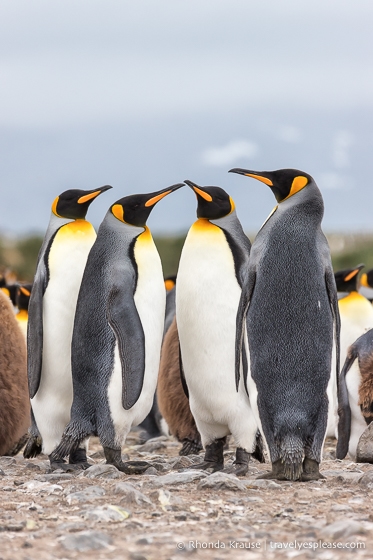
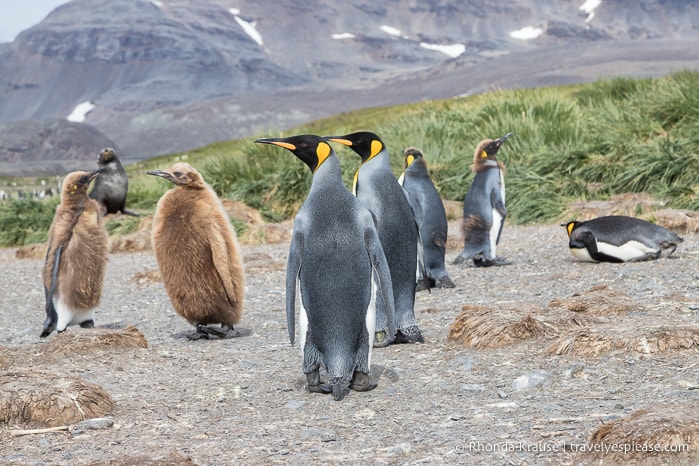
It was such a privilege to witness an enormous amount of wildlife in a breathtaking location. Add in some close meet ups with king penguins and it was the perfect experience that we will treasure forever!
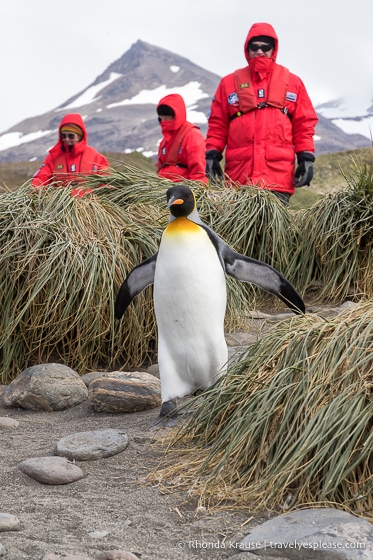
Tips for Visiting Salisbury Plain on South Georgia Island
Location: Salisbury Plain is located in the Bay of Isles on the north shore of South Georgia Island. It lies between Start Point on the west and Lucas Glacier on the east. The coordinates are Latitude 54˚ 03’ S Longitude 37˚ 19’ W.
Getting There/How to Visit Salisbury Plain: Salisbury Plain can only be reached by boat. The easiest way to visit is on an expedition cruise because the cruise company takes care of the required permits to visit South Georgia. If you come by private yacht, you will need to apply for a visit permit for the vessel.
- Landings at Salisbury Plain are very dependent on wind and surf conditions. The bay is prone to ocean swells and the primary landing beach can have heavy breaking surf.
- Landings may be impossible at the peak of fur seal breeding season to avoid disturbing them.
Biosecurity: Before disembarking the ship, you will need to ensure that your clothing, footwear, and bags don’t have any soil, seeds, and pebbles stuck to them. This is to prevent non-native plant species from being introduced. You must also clean your gear upon return to the ship to prevent non-native species being spread to other parts of the island.
Visitor Guidelines: Visitors must stay on the perimeter of the king penguin colony, keeping at least 10 m from the edge. Avoid blocking the penguin access routes between the colony and the beach.
- Keep a respectful distance from wildlife and move slowly. If an animal changes its behaviour in your presence, you’re too close.
- Your ship’s expedition crew will likely set up a guided walking area on the hill overlooking the colony- stay within the flagged area.
- You can freely roam on the glacial outwash plain outside of the penguin colony and on the beach area, as long as you won’t be interfering with the wildlife. If the beach is crowded with wildlife, or it’s breeding season for elephant and fur seals, your guides may flag a safe route along the beach.
- Avoid skua nesting sites and don’t walk on lichen and moss.
Information was correct at the time of publishing, but can change without notice. Please confirm directly with service providers.

More Antarctic and Subantarctic Destinations and Travel Guides
- Grytviken, South Georgia- Visiting an Abandoned Whaling Station
- Wildlife in Antarctica- A Visitor’s Guide to Antarctic Wildlife
- WHAT TO EXPECT ON YOUR FIRST TRIP TO ANTARCTICA- A FIRST TIME VISITOR’S GUIDE
- HOW TO PLAN A TRIP TO ANTARCTICA- THINGS TO CONSIDER WHEN CHOOSING AN ANTARCTICA CRUISE
- THINGS TO DO IN STANLEY- HOW TO SPEND 1 DAY IN THE CAPITAL OF THE FALKLAND ISLANDS
